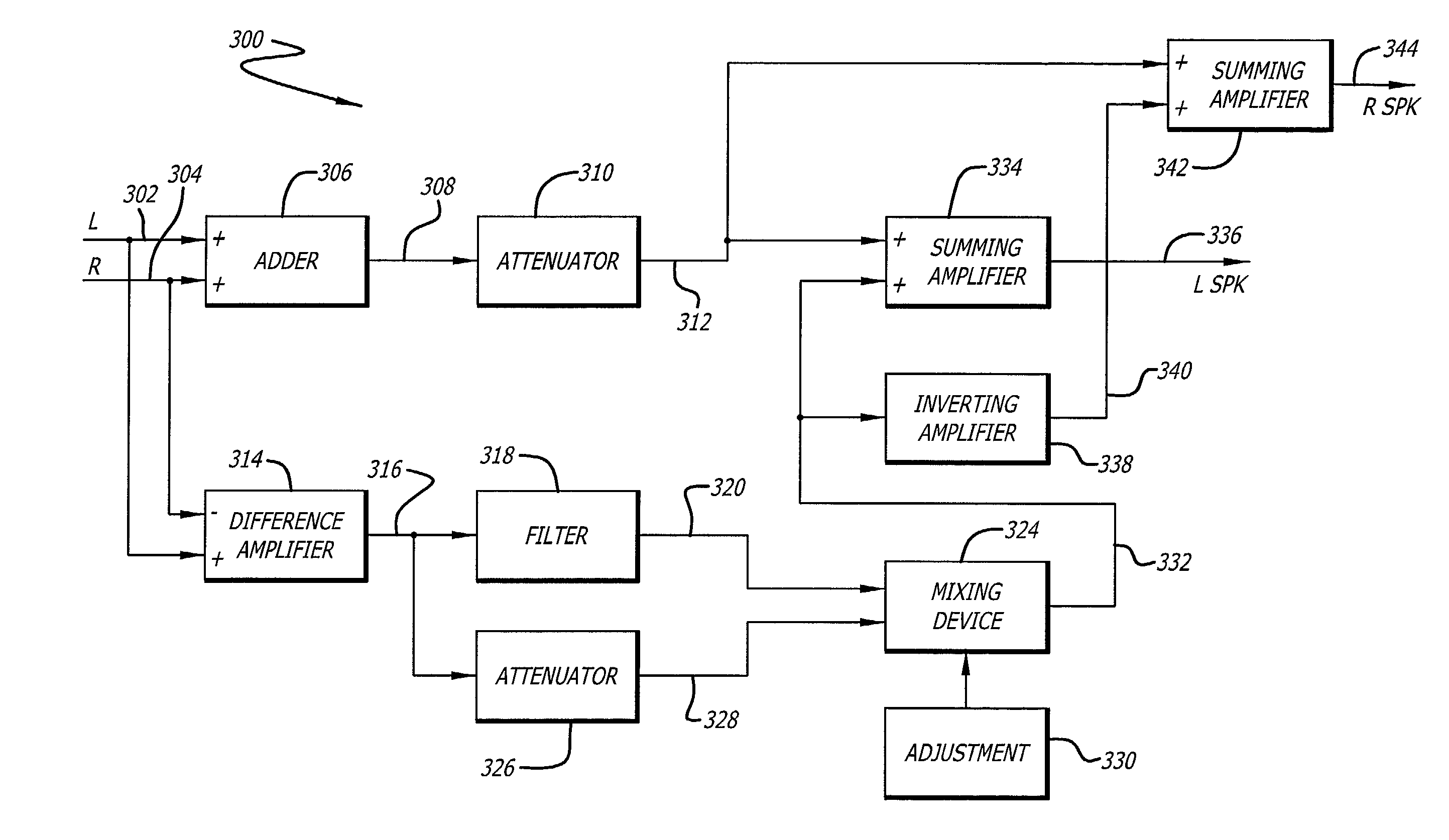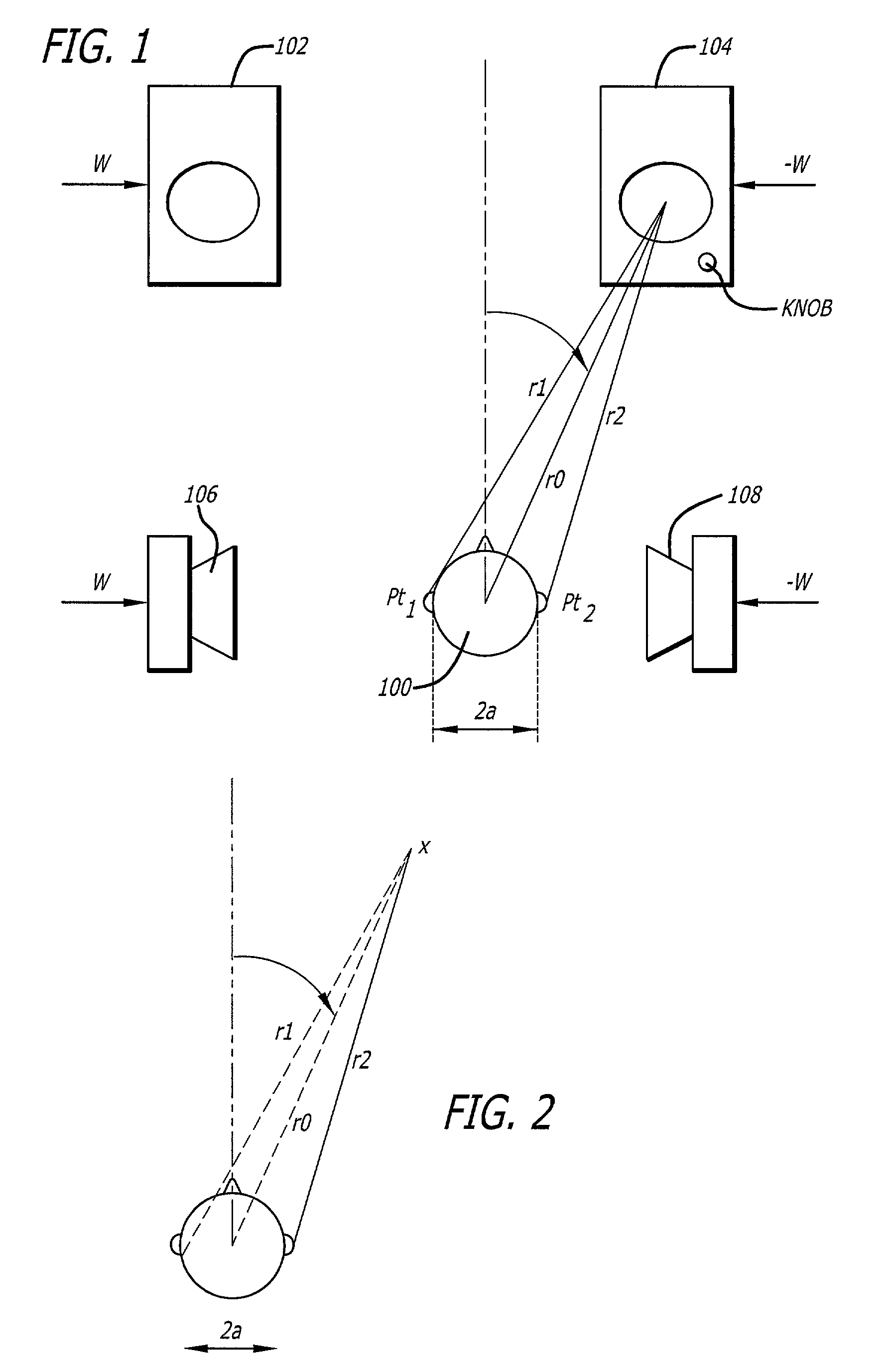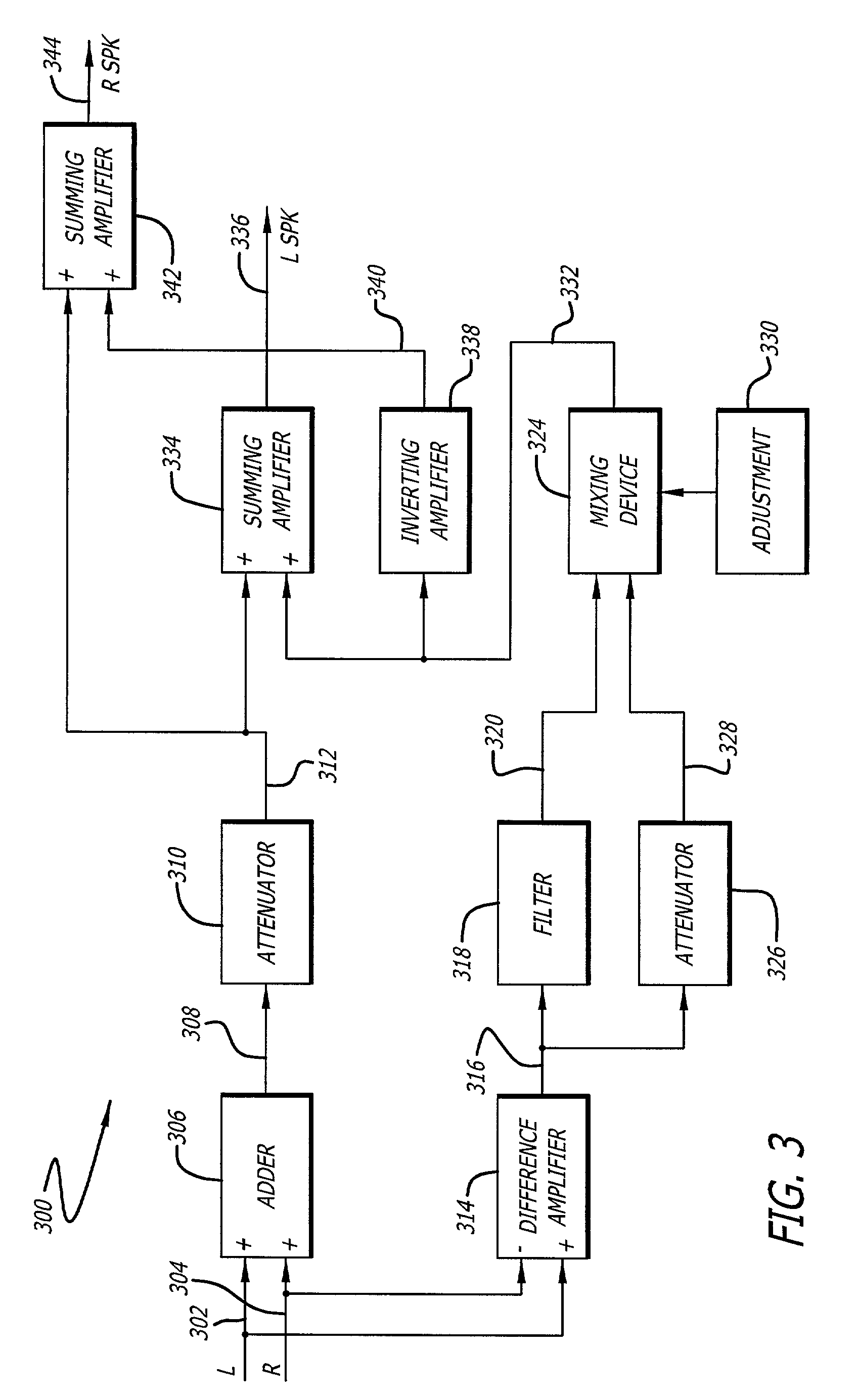System for transitioning from stereo to simulated surround sound
a technology of simulated surround sound and system, applied in stereophonic systems, stereophonic arrangments, electrical apparatus, etc., can solve the problems of not being a practical way to simulate surround sound effect, taking time and adding costs, and installing wires for rear speakers
- Summary
- Abstract
- Description
- Claims
- Application Information
AI Technical Summary
Benefits of technology
Problems solved by technology
Method used
Image
Examples
Embodiment Construction
[0021]Surround sound effect may be generated from the two front speakers through dipole and monopole sound fields as described in U.S. patent application Ser. No. 09 / 546,103 filed Apr. 10, 2000, entitled “Creating Virtual Surround Using Dipole and Monopole Pressure fields,” and is incorporated by reference. FIG. 1 illustrates points Pt1 and Pt2 separated by a distance 2a, where a represents the radius of the listener's head 100. The distance between Pt1 and the right speaker 104 may be r1, and the distance between Pt2 and the right speaker 104 may be r2. By geometry, the left front speaker 102 and the right front speaker 104 are placed at a distance 2r0 sin θ apart, where r0 represents the center between the two points Pt1 and Pt2. When the left and right rear speakers 106 and 108 are positioned substantially perpendicular to the listener's ears, the motion of the surround sound from these two rear speakers may propagate substantially in a perpendicular direction to the listener's e...
PUM
 Login to View More
Login to View More Abstract
Description
Claims
Application Information
 Login to View More
Login to View More - R&D
- Intellectual Property
- Life Sciences
- Materials
- Tech Scout
- Unparalleled Data Quality
- Higher Quality Content
- 60% Fewer Hallucinations
Browse by: Latest US Patents, China's latest patents, Technical Efficacy Thesaurus, Application Domain, Technology Topic, Popular Technical Reports.
© 2025 PatSnap. All rights reserved.Legal|Privacy policy|Modern Slavery Act Transparency Statement|Sitemap|About US| Contact US: help@patsnap.com



